LLL for Japanese is a script created by Levi Layague Miranda in 2015, and is an extension of the original LLL for Tagalog. At first the extended LLL character set was only developed to translate Chinese loanwords in Tagalog (such as "pancit", "toyo", "lumpia", etc.) to LLL, for a more accurate, phono-semantic translation. Later on it became a stand-alone conscript with the addition of hiragana and katakana equivalents. It can be used to write Japanese, as well as Chinese.
Equivalent LLL characters used in written Japanese can be classified as follows:
The consonants of the LLL syllabary can be used to represent romaji. Actual romaji can be used for words or abbreviations.
The rules for hiragana equivalents are similar to that of LLL modified baybayin.
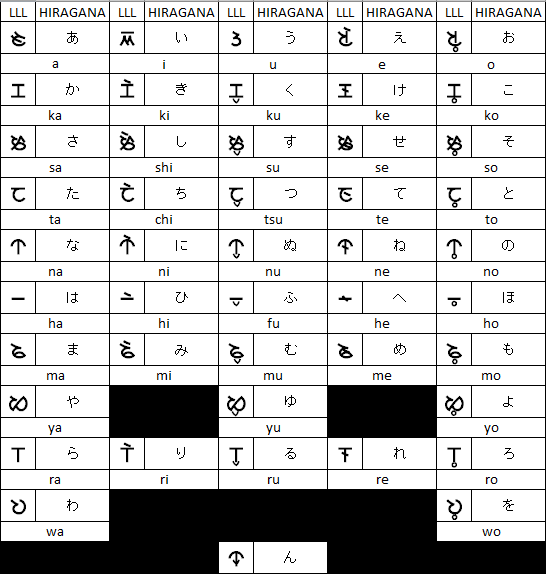
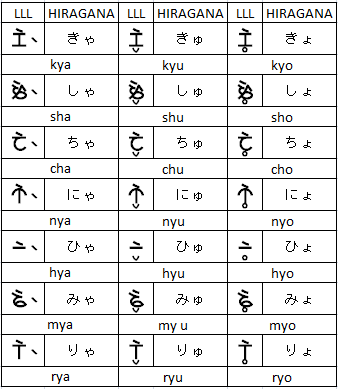
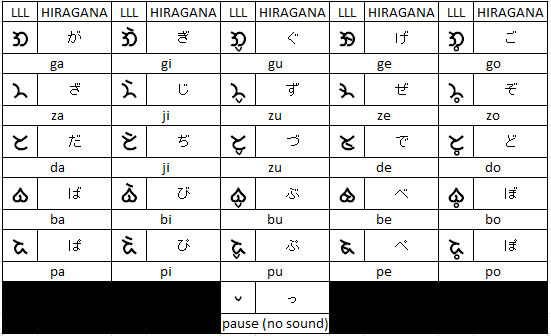
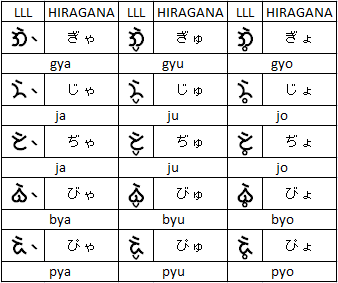
Any kanji with less than 7 strokes are represented in LLL by "tails" with or without "kudlit", and fundamental and primary brief forms. For more information about brief forms, tails and kudlit, see the LLL page.
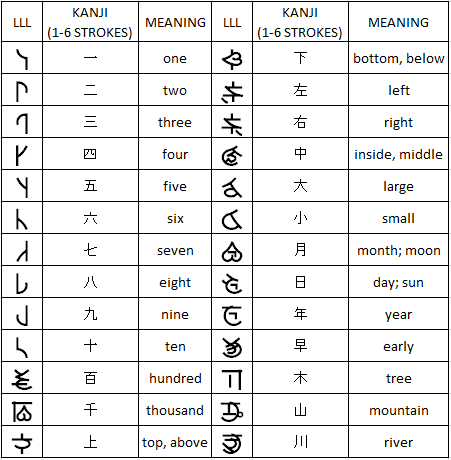
The rules for katakana equivalents are similar to that of the LLL syllabary.
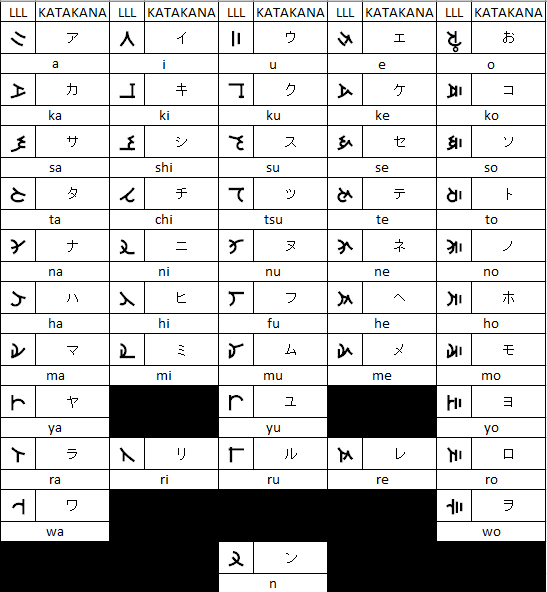
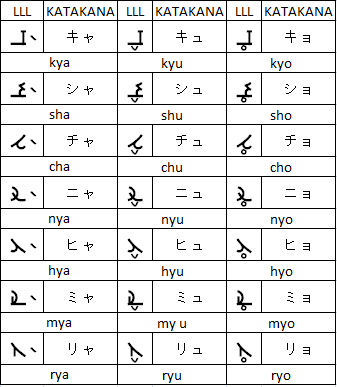

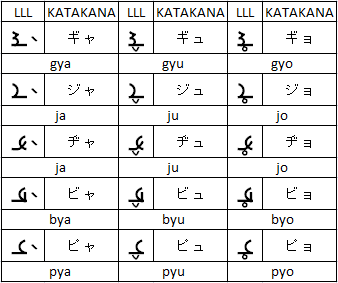
Kangxi radicals with 7+ strokes and are included in the kyōiku list are represented in LLL by their corresponding tails (marked or unmarked with kudlit) plus a vertical line on the right side.
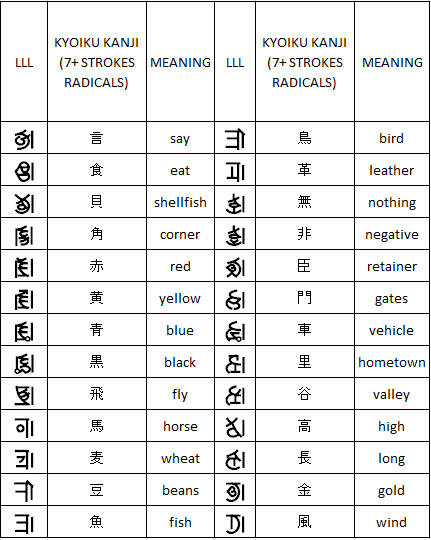
Kanji under the kyōiku list that contains 2-3 (repeated) radicals are represented in LLL by their corresponding tails (marked or unmarked with kudlit) plus an LLL numeral corresponding to the number of radical repetition within the character.

Kanji under the kyōiku list with 7-9 characters are represented in LLL by their corresponding tails (marked or unmarked with kudlit) plus an LLL numeral (8 & 10 for 8 strokes and 9 & 1 for 9 strokes) corresponding to the stroke count. If the stroke count is 7, an encapsulating kudlit is used.
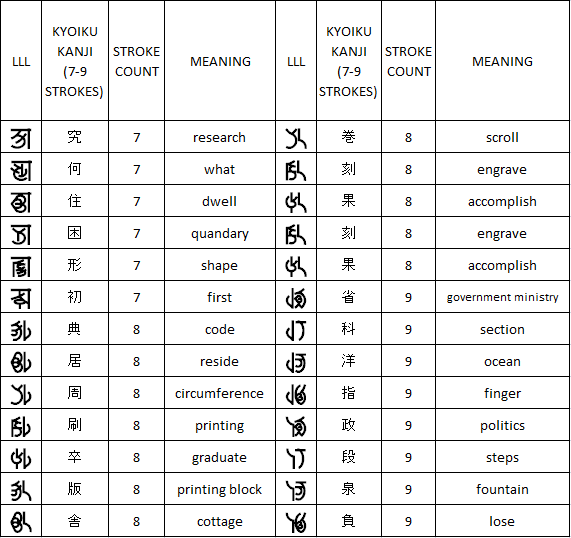
Kanji under the kyōiku list and with 10+ strokes that are not radicals or double/triple radicals, are represented in LLL by virtue of LLL secondary tail-syllabary combination. The phonetic component of the LLL representation is based on the equivalent LLL syllabary (half-form) of the pinyin of the character at hand. The semantic component is the corresponding tail of the approximate meaning of the character at hand.
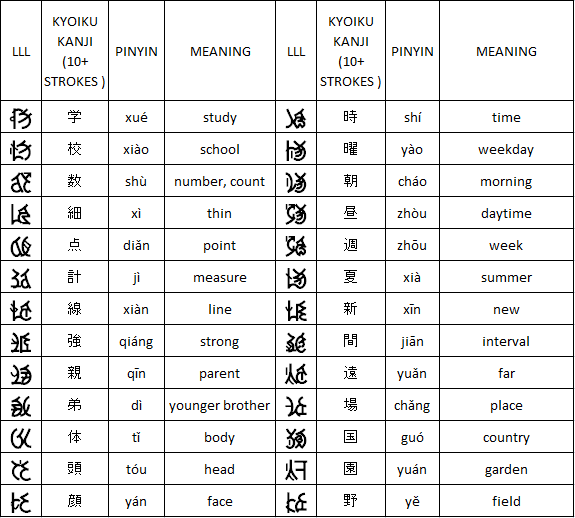
Kanji under the jōyō list but not under the kyōiku list and with 7+ strokes, are represented in LLL by virtue of LLL secondary tail-syllabary combination. The phonetic component of the LLL representation is based on the equivalent LLL syllabary (full-form) of the pinyin of the character at hand. The semantic component is the corresponding tail of the approximate meaning of the character at hand.
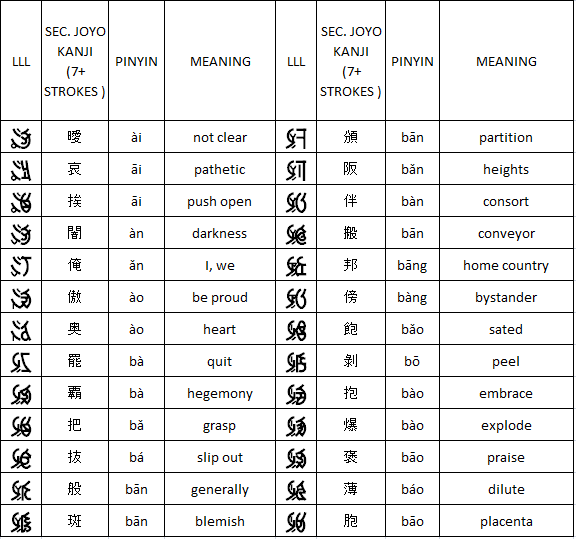
Kanji under the jinmeiyō list and with 7+ strokes, are represented in LLL by virtue of LLL secondary tail-syllabary combination. The phonetic component of the LLL representation is based on the equivalent LLL syllabary (full-form) of the pinyin of the character at hand. The semantic component is the corresponding tail of the exact radical equivalent (if possible) of the character at hand. A characteristic mark or kudlit is placed at the lower left part of each character in order to distiguish them from secondary jōyō kanji equivalents.
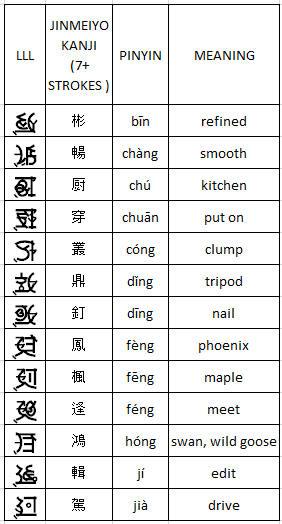
Kanji under the hyōgai list and with 7+ str okes, are represented in LLL by virtue of LLL secondary tail-syllabary combination. The phonetic component of the LLL representation is based on the equivalent LLL syllabary (full-form) of the pinyin of the character at hand. The semantic component is the corresponding tail of the exact radical equivalent (if possible) of the character at hand. A characteristic mark or kudlit is placed at the lower right part of each character in order to distiguish them from secondary jōyō kanji equivalents.
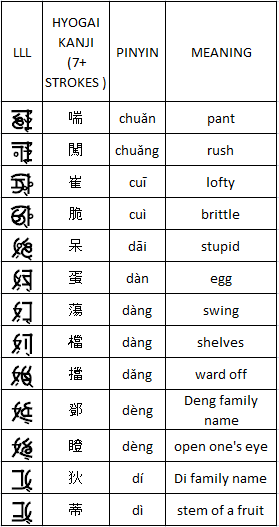


Subete no ningen wa, umarenagara ni shite jiyū de ari, katsu, songen to kenri to ni tsuite byōdō de aru. Ningen wa, risei to ryōshin to o sazukerarete ori, tagai ni dōhō no seishinn o motte kōdō shinakereba naranai.
All human beings are born free and equal in dignity and rights.
They are endowed with reason and conscience and should act towards
one another in a spirit of brotherhood.
(Article 1 of the Universal Declaration of Human Rights)
Constructed scripts for: Ainu | Arabic | Chinese languages | Dutch | English | Hawaiian | Hungarian | Japanese | Korean | Lingala | Malay & Indonesian | Persian | Tagalog / Filipino | Russian | Sanskrit | Spanish | Taino | Turkish | Vietnamese | Welsh | Other natural languages | Colour-based scripts | Tactile scripts | Phonetic/universal scripts | Constructed scripts for constructed languages | Adaptations of existing alphabets | Fictional alphabets | Magical alphabets | A-Z index | How to submit a constructed script
[top]
You can support this site by Buying Me A Coffee, and if you like what you see on this page, you can use the buttons below to share it with people you know.

If you like this site and find it useful, you can support it by making a donation via PayPal or Patreon, or by contributing in other ways. Omniglot is how I make my living.
Note: all links on this site to Amazon.com, Amazon.co.uk
and Amazon.fr
are affiliate links. This means I earn a commission if you click on any of them and buy something. So by clicking on these links you can help to support this site.
[top]